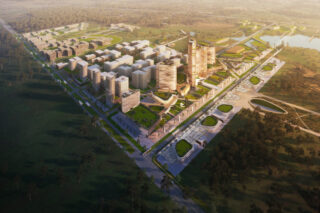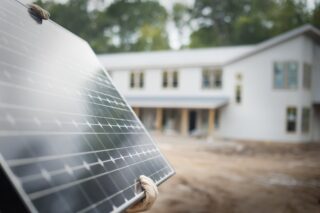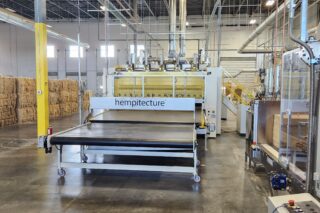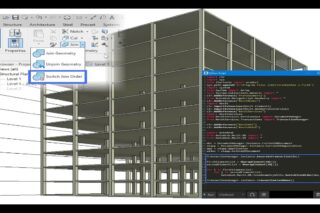Described by Norman Foster as “a celebration of space and light,” it’s easy to be impressed with the free-flowing, luminescent design of the new City Hall in Buenos Aires, which opened in April 2015. But it’s true innovations lie beneath the surface with eco-friendly attributions.
Argentinean Recipe to Cool Concrete
A network of small “diffuser” vents embedded in the floor emits gentle jets of air regulated by a “free cooling” system, which uses naturally cool air from outside to lower the indoor temperature and cut energy consumption. The level is maintained by “chilled beams” of cold water installed in concrete ceilings—a material selected for its propensity to stay cool, and as a throwback to the former factory’s industrial past.
“Today, the building is like a big factory for white-collar workers; we wanted it to look like it had always been here,” says Juan Frigerio, the architect in charge at Foster + Partners, to ArchiExpo e-Magazine.
A special cement mixture was created to make the concrete both lighter and less expensive—most notably for the construction of a striking curved roof that protects the building’s main façade from excess heat, while allowing abundant light to enter. A flat design would have been fatter, heavier and more expensive.
Office Villages, Concrete Screens & Co.
“We want all the natural light, but not the heat, and to combine aesthetics with sustainability and innovation,” explains Frigerio. Three walkways crossing what he describes as “canyons of light” separate the building into four “office villages,” which the architect compares to a small city or college campus. Around 1,300 people work at the 45,000m2 site.
The east and west façades are protected by concrete screens cast in a shuttered pattern, designed to shield workers from fierce summer temperatures that can reach 40ºC. Double glazing also helps keep the heat outside.
Other eco-friendly features include lights with dimmers controlled by brightness or movement sensors. A range of conservation measures includes reusing dirty “grey water” from sinks to flush toilets or irrigate flower beds, and collecting rainwater from the curved roof and storing it in vats built in the basement.
“I followed the idea of classic perfection,” says Frigerio. “Everything is here for a reason—you don’t need to remove or add. The building is almost perfect.”











